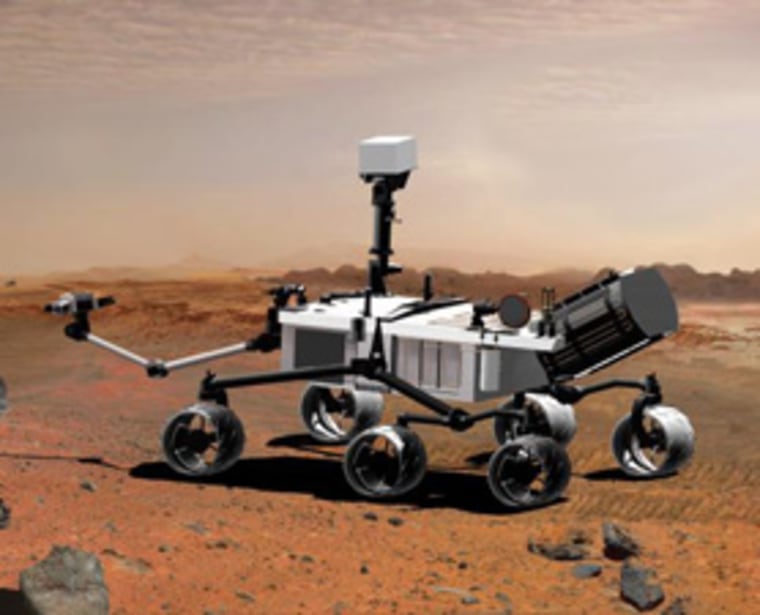Next Mars Probe Gets Carbon-Sniffing ToolA new tool for the next Mars rover will allow it to more definitively detect organic matter, avoiding controversy that has plagued results from the Viking lander.
When NASA announced that technical problems would delay launch of its next Mars probe -- a long-awaited robotic laboratory designed to assess the planet's suitability for life -- scientists were understandably bummed.
But if the probe, known as Mars Science Laboratory, hits paydirt with a find of organic carbon, the delay may turn out to be a most fortuitous turn of events. That's because as engineers fixed potential problems with the rover's landing system, scientists added a new experiment that could reveal if any detected carbon has biological roots.
"If we find organic carbon on Mars and we find that there is some diverse chemistry, then this experiment could be incredibly valuable. Who knows what the consequences of this could be?" MSL scientist Jennifer Eigenbrode, with NASA's Goddard Space Flight Center in Greenbelt, Md., told Discovery News.
"The purpose of (Eigenbrode's) experiment is to remove another layer of doubt if there are organics," added Paul Mahaffy, principal investigator for the rover's Sample Analysis at Mars, or SAM, instrument, which now includes Eigenbrode's experiment.
A better understanding of Mars' chemistry could mitigate any controversy over results, such as what happened after the Viking missions of the 1970s. Some scientists still claim the landers found signs of life.
"One of the unique features of SAM that's different from Viking is that it has the capabilities for many different types of experiments and each one could shed light on the carbon that's in a sample. Viking didn't have that. It was just a one-shot deal," Eigenbrode said.
The rover, targeted for launch in 2011, is designed to collect, process and analyze soil and rock samples. Previous missions already have revealed that Mars was not always the dry and freezing desert that exists today. With Mars Science Lab, or MSL, NASA intends to follow up the evidence of the planet's watery past with related studies detailing Mars' chemistry, with a particular emphasis on materials needed for life (at least on Earth), such as carbon.
"Organic compounds may exist on Mars in a variety of ways," Eigenbrode said. "They could have a wide range of difference chemistries and they could exist in various forms."
The SAM instrument heats ground-up rock and soil samples, then analyzes the gases for molecular compounds. The new experiment adds a chemical cocktail, known as tetramethylammonium hydroxide in methanol, or TMAH, which is used in labs on Earth to study organic compounds. It preserves molecular structures otherwise lost in the heating process.
Tests to determine if the chemistry would work in the highly radioactive and iron-rich environment of Mars had not been done when scientists selected experiments for Mars Science Lab, initially targeted for launch in October 2009.
"I was doing research for future missions and what happened was that MSL was delayed just when I found out that this was a very useful experiment to include," Eigenbrode said.
"This big question is 'Is there or was there life on Mars,'" added Mahaffy. "We're trying to go about answering this in a systematic way. Hopefully, people will be patient if we don't immediately find life 10 minutes after MSL lands."
